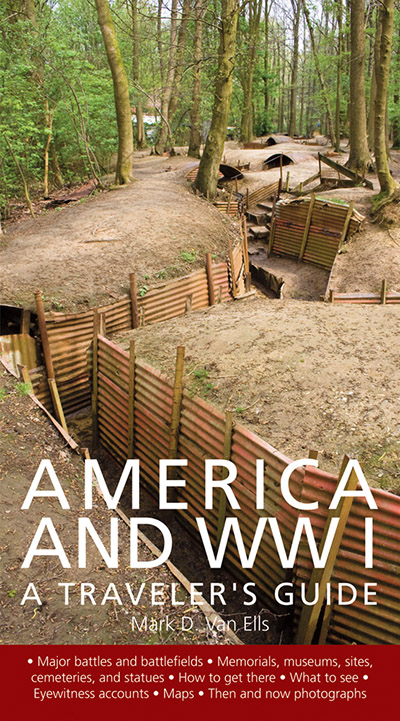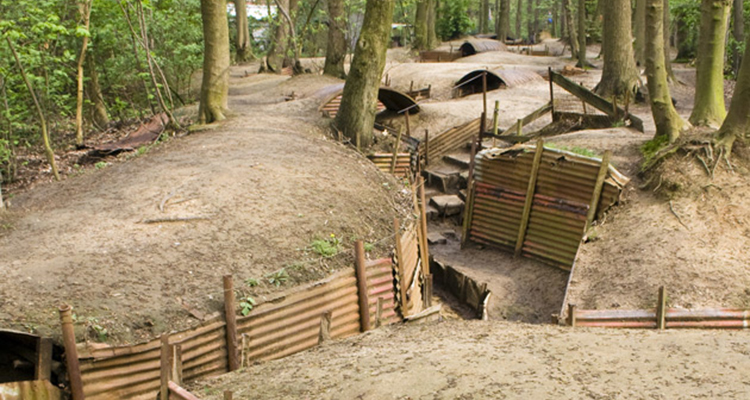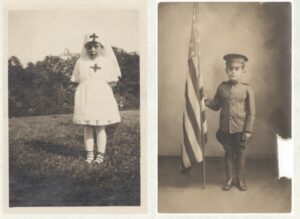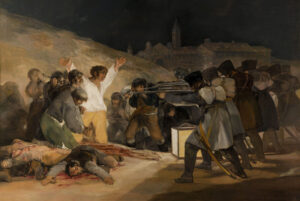 America and World War I
America and World War I
A Traveler’s Guide
By Mark D. Van Ells. 432 pages.
Interlink Books, 2014. $22.
THE CENTENNIAL OF THE OUTBREAK of World War I in Europe in 1914 has generated an uptick in battlefield tourism to places like the Somme, Verdun, and Ypres. The centennial of American intervention in 1917 may be expected to incite a similar increase in tourists from the United States going to visit places like Belleau Wood and the Meuse–Argonne. The publication of a travel guide to American World War I battlefields is therefore timely. America and World War I: A Traveler’s Guide will probably be only the first of many such works.
The American experience of World War I began in the United States when training camps sprouted up across the country to process, organize, and train thousands of volunteers and draftees. Van Ells, after introductory chapters on the road to war and General John J. Pershing, appropriately devotes a chapter to these camps, along with specialized sites, such as camps for chemical weapons and medical training. GPS coordinates and descriptive narratives are helpfully provided for all the important camps (as they are for major American airfields in France). Van Ells then discusses at length—perhaps excessively—ports of embarkation, the war at sea, and the doughboys’ arrival in Europe before proceeding to battle sites.
The guide covers significant skirmishes, among them Bathelémont and Seicheprey, as well as larger affairs, such as Belleau Wood and Saint Mihiel. Van Ells’s narratives of these events are extensive if not always thorough. Typically, he outlines campaign strategy to provide context and then zeroes in on combat engagements, chronicling their progress and outcome before describing how the battlegrounds look today. Van Ells is not always accurate—he mistakenly presents, for example, the German attack on Château-Thierry at the end of May 1918 as part of a thrust toward Paris and mischaracterizes some tactical deployments in Belleau Wood—but on the whole his narrative is reliable. He deserves credit for steering clear of the legends and propaganda that still infect many modern accounts.
Unfortunately, the guide has some significant weaknesses. Van Ells rightfully devotes a chapter to sites where units of the African American 92nd and 93rd Divisions saw combat, but the space given to other chapters, for example, the one on the war behind the lines, would have been better used to cover more important events. Compressing the events of May to August 1918 into a single chapter, he largely neglects the assault of the U.S. 1st and 2nd Divisions south of Soissons on July 18–21, 1918, which was significant in the Second Battle of the Marne. Moreover, Van Ells’s summaries of Saint Mihiel and the Meuse-Argonne read well but seem ill calibrated for use by travelers. Worst is the paucity of detailed maps essential for any travel guide. The small (some only quarter-page) black-and-white reproductions of maps from American Armies and Battlefields in Europe (1937) that constitute the guide’s only maps are inadequate. While useful, therefore, this work should not be the final word on battlefield guides to American participation in World War I.
Edward G. Lengel is director of the University of Virginia’s Papers of George Washington project. His most recent book is Thunder and Flames: Americans in the Crucible of Combat, 1917–1918 (March 2015).


.jpg)



